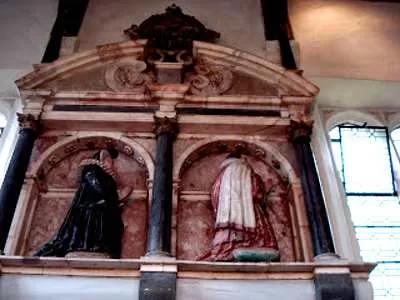The witch trials of the early 17th century remain one of the most chilling chapters in human history. In Lancaster, England, two judges, Sir Edward Bromley and Sir James Altham, presided over these harrowing events in 1612. Their decisions not only shaped the fate of accused witches but also reflected the societal fears and superstitions of the time.
This article delves into the lives of these judges, the trials they oversaw, and the broader implications of witchcraft accusations that resonate even today.
The Judges of Lancaster: Sir Edward Bromley and Sir James Altham
Sir Edward Bromley and Sir James Altham were prominent figures in the Northern circuit, known for their roles in the infamous Lancaster witch trials. At the Lent assizes in York, Bromley had previously overseen the trial of Jennet Preston, who was accused of bewitching a child. Despite the gravity of the charges, she was acquitted by the jury. However, the tides turned for her during a second trial in July, presided over by Altham, where she was condemned to death for the alleged murder of Thomas Lister.

Bromley’s judicial history is sparse, with little evidence of him presiding over witch trials before 1612. However, records indicate that in 1614, he ordered the hanging of Cicilia Dawson for witchcraft, and in 1619, he condemned Margaret and Phillip Flower to death, stating it was “to the terror of all beholders.” Altham, on the other hand, had a more established record, having already executed a witch at the Chelmsford Assizes in 1607.
The Broader Context of Witchcraft Accusations
The witch trials were not isolated incidents but part of a larger pattern of persecution fueled by fear and superstition. The societal climate of the time was rife with anxiety over witchcraft, often exacerbated by religious tensions and political instability. The trials served as a means for authorities to exert control and instill fear among the populace.
One notable case during this period was that of Bartholomew Legate, a London draper who preached heretical views alongside his brothers. His charismatic nature and rejection of established church rituals led to his arrest for heresy in 1611. After a series of legal battles, he was ultimately burned at the stake in 1612, marking a significant moment in the history of religious persecution.
The Last Heretic: Edward Wightman
Edward Wightman, a mercer from Burton, became the last person to be executed for heresy in England. His extreme beliefs, including the denial of the Trinity and claims of being the reincarnation of the prophet Elijah, drew the ire of church authorities. After a tumultuous trial, he was sentenced to death. His execution was marked by a dramatic series of recantations, ultimately leading to his fiery demise in 1612. This event shocked the public and contributed to a shift in how heretics were treated, with many being left to languish in prison rather than face public execution.
The End of Witch Hunts in England
Witch hunts persisted in England until 1682, with some arguing that the last execution occurred in 1684. The legal framework surrounding witchcraft underwent significant changes over the years, culminating in the repeal of witchcraft laws in 1951. The last person convicted of witchcraft in England was Helen Duncan in 1944, whose conviction was later denounced by Prime Minister Churchill as “tomfoolery.” Her family continues to seek justice, highlighting the lingering impact of these historical injustices.
Witchcraft Accusations Today
Despite the historical context, allegations of witchcraft persist in various parts of the world. Tragically, individuals—men, women, and children—continue to be targeted and killed based on suspicions of witchcraft. Reports of such atrocities serve as a grim reminder that the fear and superstition that fueled the witch trials of the past are still present in the 21st century.
Conclusion
The legacy of the witch trials, particularly those presided over by judges like Sir Edward Bromley and Sir James Altham, serves as a cautionary tale about the dangers of fear-driven justice. As we reflect on this dark chapter in history, it is crucial to recognize the ongoing implications of witchcraft accusations and the need for vigilance against the resurgence of such harmful beliefs. Understanding our past can help us build a more just and compassionate future.